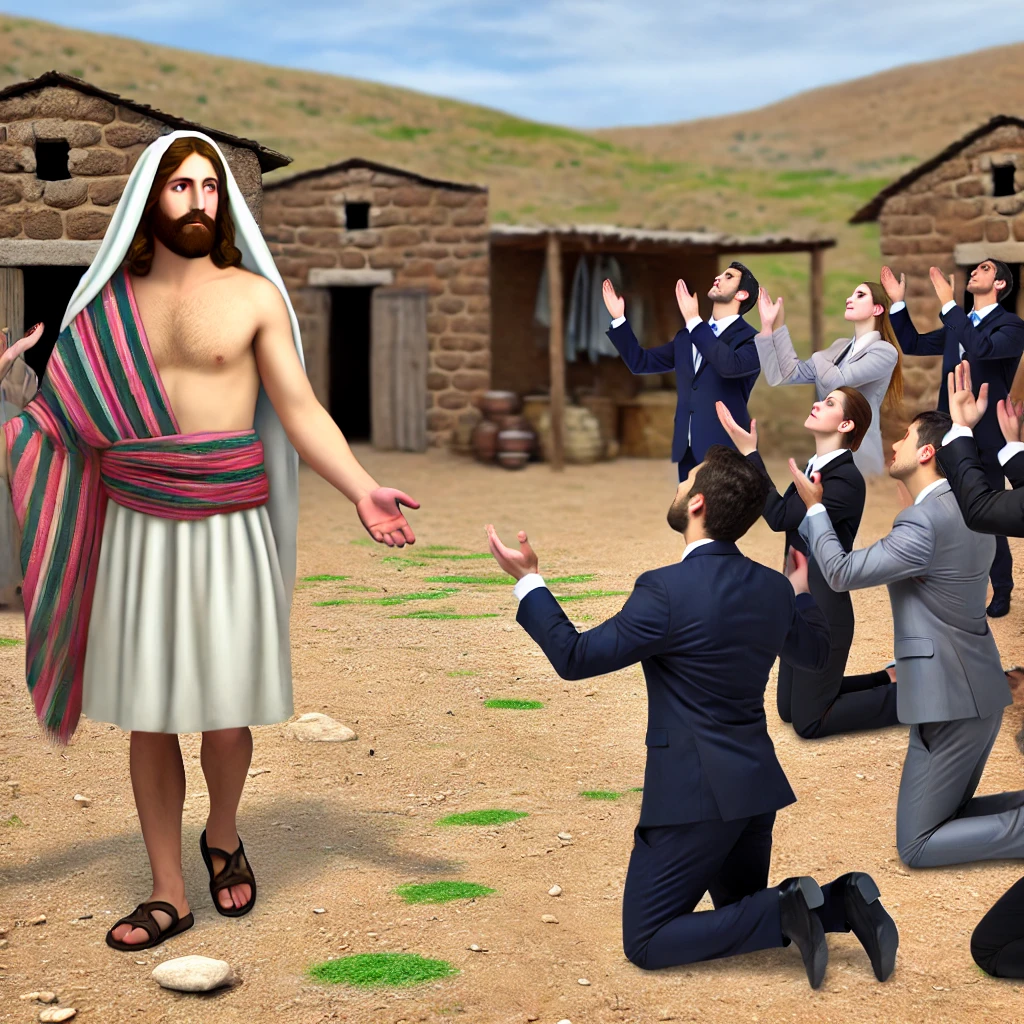
Examining the Core Teachings and Intentions of Jesus Christ: Church Establishment, Divinity, and Early Christian Communities
Abstract
This article delves into the core teachings and life of Jesus Christ, questioning whether He intended to establish a church and be regarded as God, as contemporary Christian doctrine asserts. It examines the beliefs of early Christian communities and the transformation of Christianity under Emperor Constantine, leading to the establishment of the Roman Catholic Church and the continuation of the doctrine of the Trinity in Protestant churches. The study investigates the influence of Constantine’s political motivations on the development of Christian orthodoxy and its enduring legacy.
Introduction
The figure of Jesus Christ is central to Christian faith, yet scholarly debates continue regarding His intentions and the subsequent evolution of Christian doctrine. This article aims to explore whether Jesus intended to establish a church and be worshiped as God, analyzing early Christian communities’ beliefs and the significant role of Emperor Constantine in shaping Christianity as we know it today.
Core Teachings of Jesus Christ
Historical Context and Teachings
Jesus of Nazareth, a Jewish teacher and healer, lived in first-century Palestine under Roman occupation. His teachings, primarily recorded in the Gospels, emphasize love, forgiveness, and the Kingdom of God (Crossan, 1994). Jesus’ parables and sermons, such as the Sermon on the Mount (Matthew 5-7), underscore moral and ethical conduct, social justice, and the spiritual transformation of individuals.
Intention to Establish a Church
The question of whether Jesus intended to establish a formal church is complex. The Gospels suggest that Jesus envisioned a community of followers dedicated to His teachings (Matthew 18:20). However, there is little evidence that He intended to create an institutionalized church. The term “church” (ekklesia) appears in the Gospels, but its interpretation as a formal institution is debated (Ehrman, 2014).
Jesus’ Divinity
The belief in Jesus’ divinity and His role as part of the Trinity developed over time. Jesus often referred to Himself as the “Son of Man” and spoke of His unique relationship with God, but He did not explicitly claim to be God (Sanders, 1993). The doctrine of the Trinity and Jesus’ divine status were formalized in later theological debates and councils.
Early Christian Communities
Formation and Beliefs
Early Christian communities, formed after Jesus’ crucifixion, were diverse and decentralized. These communities, known as “house churches,” were led by local leaders and emphasized communal worship, prayer, and the sharing of resources (Acts 2:42-47). Beliefs varied, with some groups focusing on Jesus’ teachings and others on His resurrection and divine nature (Pagels, 1989).
Divergence and Development
As Christianity spread, divergent interpretations of Jesus’ message emerged. Gnostic Christians, for example, emphasized esoteric knowledge and spiritual enlightenment, while Pauline Christians focused on faith in Jesus’ resurrection and salvation (Pagels, 1979). These differing beliefs led to debates and conflicts within the early Christian movement.
Constantine and the Transformation of Christianity
Constantine’s Conversion and Political Motives
Emperor Constantine’s conversion to Christianity in the early 4th century marked a turning point. His motives were likely a blend of personal belief and political strategy, as unifying the empire under a single religion could strengthen his rule (MacMullen, 1984). Constantine’s support for Christianity led to significant changes, including the Edict of Milan (313 AD), which legalized the faith.
The Council of Nicaea and Christian Orthodoxy
The Council of Nicaea (325 AD), convened by Constantine, aimed to resolve theological disputes and establish a unified Christian doctrine. The Nicene Creed, formulated at the council, affirmed Jesus’ divinity and established the concept of the Trinity (Ehrman, 2003). This creed became a cornerstone of orthodox Christian belief, influencing both Roman Catholic and Protestant traditions.
The Roman Catholic Church and Political Power
Constantine’s influence extended beyond theology. He and his successors established the hierarchical structure of the Roman Catholic Church, aligning it closely with the imperial government. This alignment allowed the church to gain political power and authority, shaping its role in medieval and modern Europe (Brown, 1989).
The Egregore of Jesus as God
Concept of Egregore in Christianity
The concept of an egregore—a collective thought form or entity created by a group’s shared beliefs—can be applied to the figure of Jesus as God. Over centuries, the belief in Jesus’ divinity has been reinforced by communal worship, theological teachings, and cultural practices, creating a powerful egregore that shapes Christian identity and doctrine (Eliade, 1959).
Continuation in Protestant Churches
The Protestant Reformation in the 16th century challenged the Roman Catholic Church’s authority but retained the core belief in the Trinity and Jesus’ divinity. Protestant reformers like Martin Luther and John Calvin sought to return to what they saw as the true teachings of Jesus, yet the established orthodoxy persisted (McGrath, 1998).
Conclusion
The core teachings of Jesus Christ focused on love, justice, and the Kingdom of God, with little indication that He intended to establish an institutional church or be worshiped as God. Early Christian communities were diverse, with varying beliefs about Jesus’ nature. Emperor Constantine’s political motives and the Council of Nicaea’s decisions significantly shaped Christian orthodoxy, establishing the doctrines of the Trinity and Jesus’ divinity. This legacy continues in both the Roman Catholic and Protestant traditions, maintained by the powerful egregore of Jesus as God.
References
Brown, P. (1989). The Rise of Western Christendom: Triumph and Diversity, A.D. 200-1000. Blackwell.
Crossan, J. D. (1994). Jesus: A Revolutionary Biography. HarperOne.
Ehrman, B. D. (2003). The Lost Christianities: The Battles for Scripture and the Faiths We Never Knew. Oxford University Press.
Ehrman, B. D. (2014). How Jesus Became God: The Exaltation of a Jewish Preacher from Galilee. HarperOne.
Eliade, M. (1959). The Sacred and the Profane: The Nature of Religion. Harcourt.
MacMullen, R. (1984). Christianizing the Roman Empire: (A.D. 100-400). Yale University Press.
McGrath, A. E. (1998). Historical Theology: An Introduction to the History of Christian Thought. Blackwell.
Pagels, E. (1979). The Gnostic Gospels. Random House.
Pagels, E. (1989). Adam, Eve, and the Serpent: Sex and Politics in Early Christianity. Random House.
Sanders, E. P. (1993). The Historical Figure of Jesus. Penguin Books.



